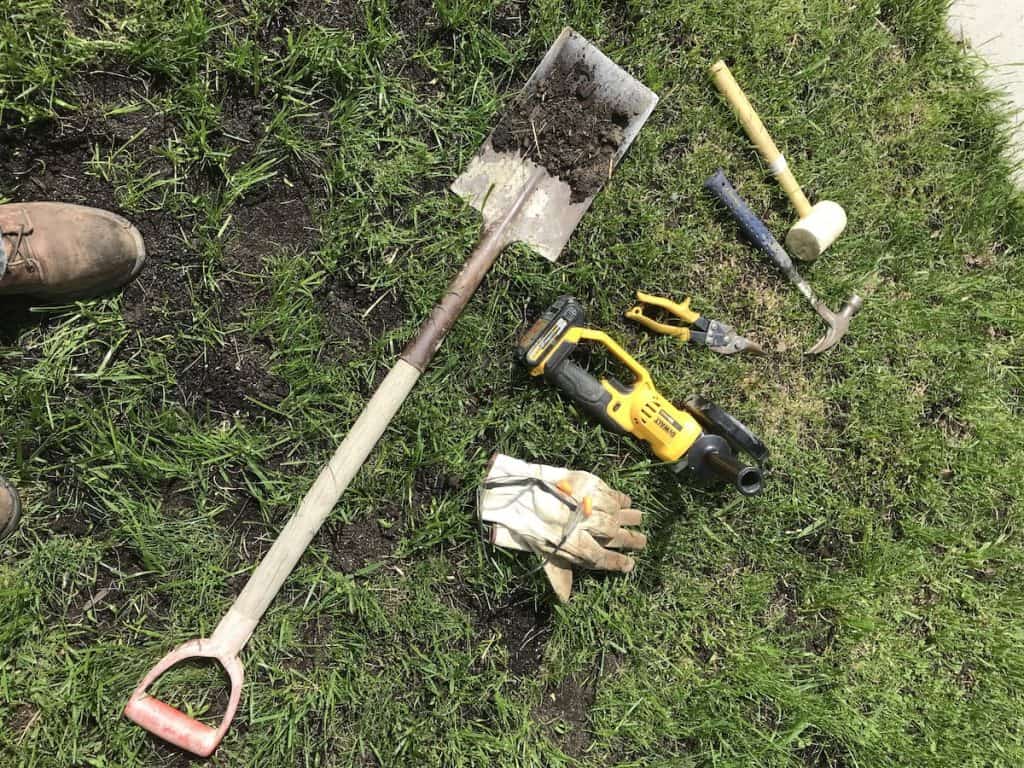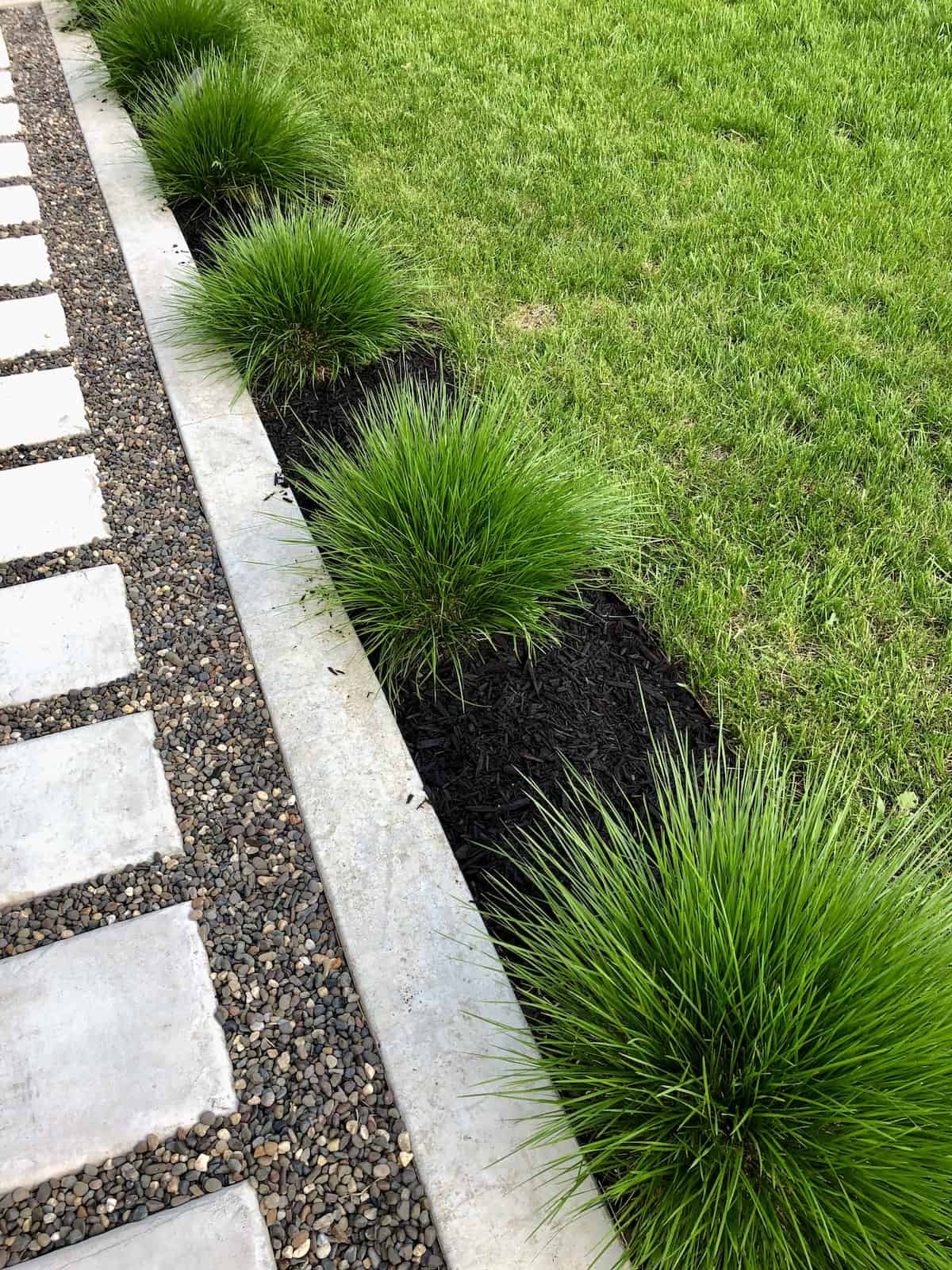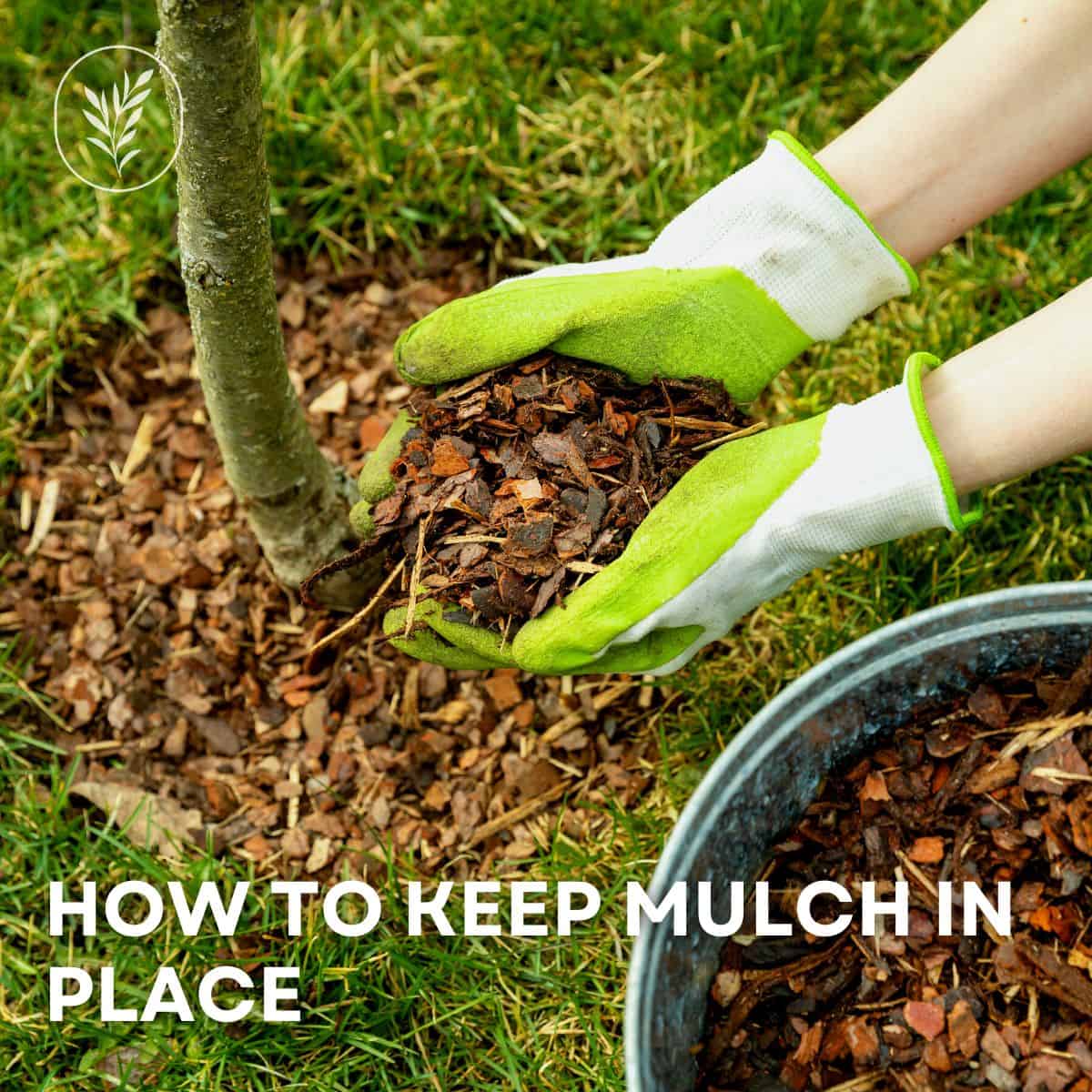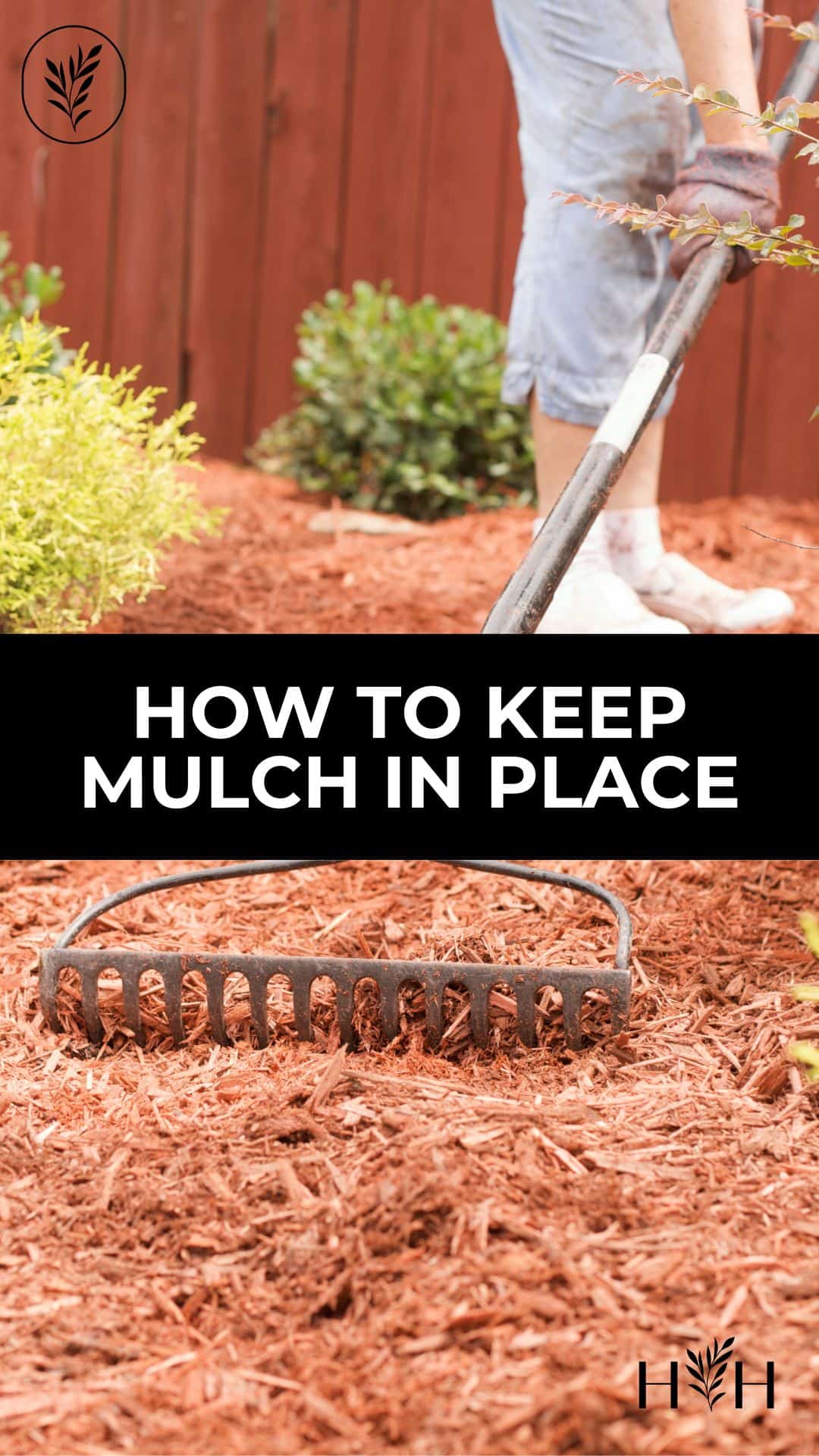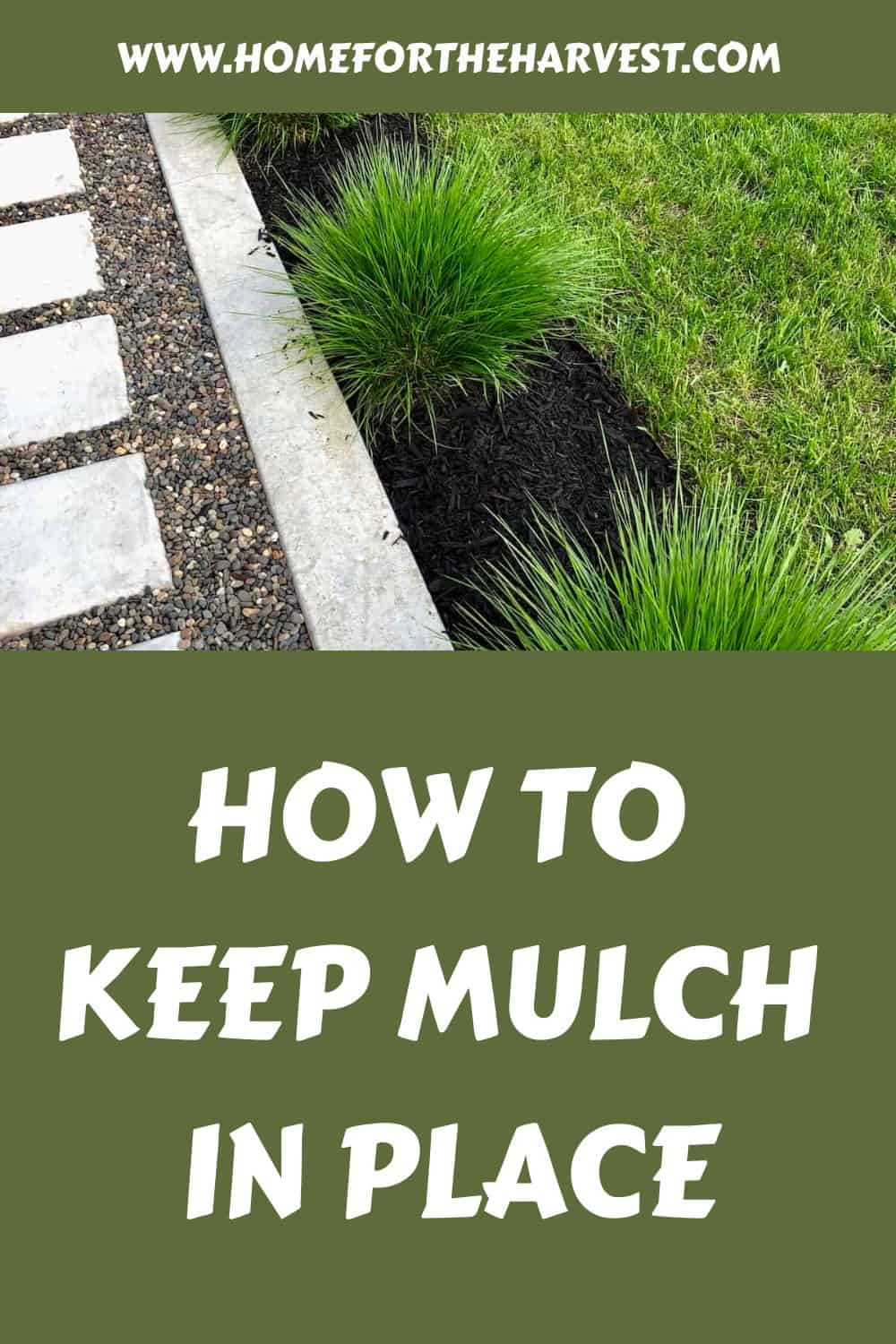Learning how to keep mulch in place is key to a well-kept garden. Weather like rain and wind – or even just foot traffic – can cause mulch to drift and slide away from garden beds. Fortunately there are some simple ways to keep mulch in place and keep up that curb appeal in the process!
Here are the top five tips to keeping mulch in place in the garden:
- Choose an interlocking organic mulch like shredded tree trimmings or pine straw mulch.
- Skip underlays like landscape fabric and plastic sheeting.
- Terrace slopes or choose a living mulch for gently sloped areas
- Edge the garden with perimeter plants, a trench, or a hardscape edging material.
- Place the mulch in thin layers rather than dumping it all at once.
- Plant a low-growing groundcover plant to help hold the mulch in place.
Read on to learn how to keep garden mulch in place and prevent it from drifting onto the lawn, driveway, or walkways.
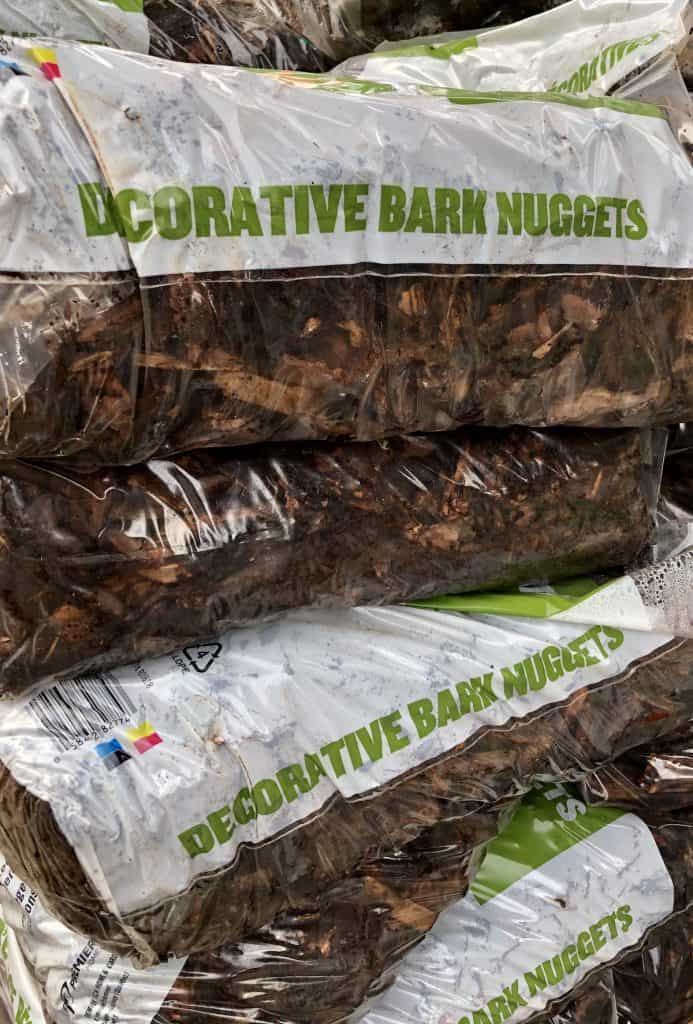
1. Choose the right mulch
The type of mulch you use affects migration away from the garden bed. Lightweight, chunky mulches are the most difficult to keep in place, as they are the most likely to “float” away in the rain or be kicked out of the garden by kids or pets. Heavier mulches, finer wood mulches, and matting-type mulches are much easier to keep in place over time.
a) Bark nuggets or wood chips
Bark nugget and wood chip types of mulch tend to move during times of heavy rain. They also are easily kicked out of place (accidentally or on purpose). If you want to keep the mulch in place, avoid these types of mulches. Alternatively, consider sourcing heavier wood chips, bark nuggets, or gravel to reduce the rate at which they move.
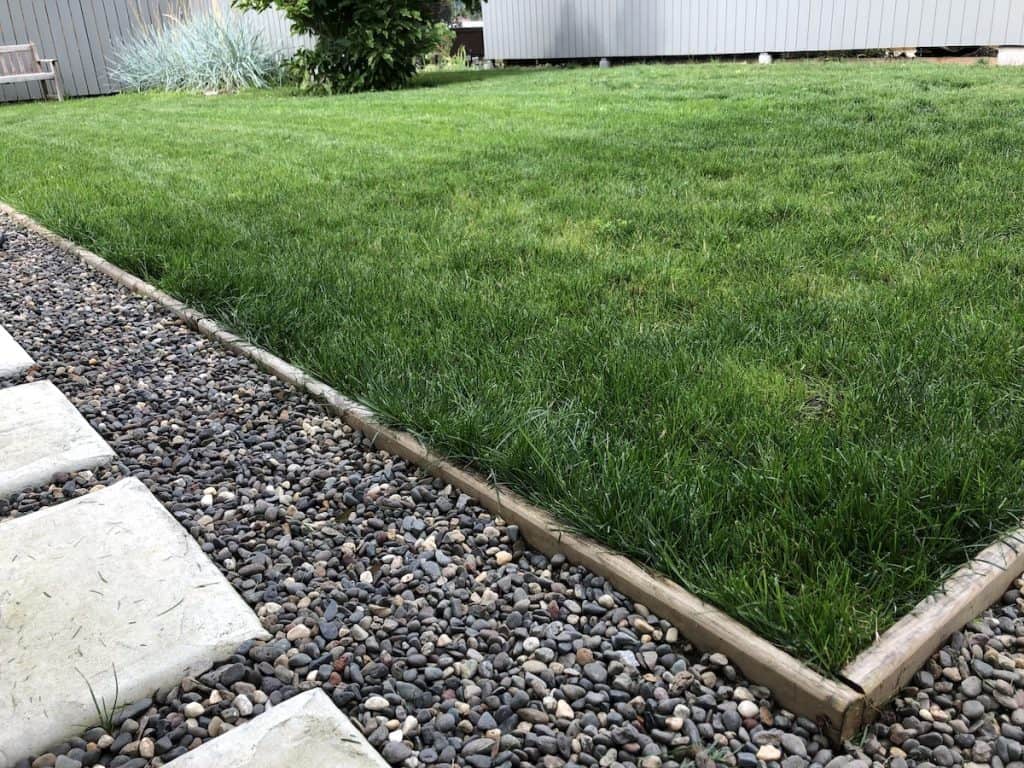
b) Pea gravel
Pea gravel is a heavier rock-type mulch common along pathways and between garden beds. While this is a coarse-type mulch (as opposed to finer sand), the rocks are heavy enough to stay in place most of the time. Some rocks may find their way out of their spot during heavy rains, spring snow melt, or a game of backyard soccer, but they are generally easy (albeit slow) to pick up and put back in place. Read more about pea gravel in the garden here.
c) Shredded wood mulch
Shredded bark and wood mulches tend to stay in place better than chunky wood mulches. The long, thin fibres tend to mat down and tangle with each other, enabling them to stay put more easily than coarse chunky wood chips or bark nuggets.
d) Compost
Homemade compost is a fine organic mulch. You can also use store-bought bulk compost made from composted plant matter. While it is lightweight, it is generally fine in texture and invites all sorts of beneficial soil life which help to create an internal fabric for the mulch. Homemade compost makes an excellent, low-cost mulch that tends to improve its staying power over time.
e) Pine straw mulch
Pine straw can behave in a similar manner to shredded wood mulch. The pine needles entwine each other and stay put. They’ll also break down over time and create an internal soil structure as they decompose. Pine needle-type mulch is common in woodland gardens, berry patches, and areas with lots of native conifer trees.
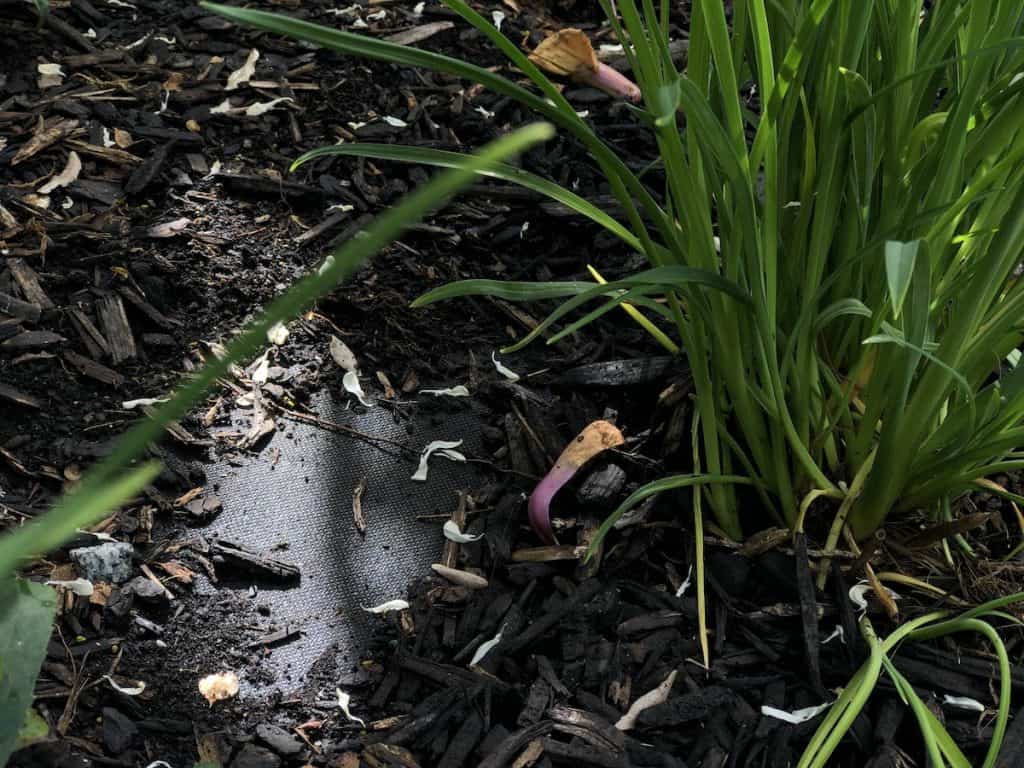
2. Skip or remove landscape fabric underlay
Black landscape fabric, lumber tarps, or underlay-like plastic sheeting creates a smooth surface for the mulch to slide. Many mulches tend to wash right off areas of the landscape fabric. This is especially true if the underlying soil isn’t perfectly flat. Mulch can accumulate in sunken pockets, leaving exposed patches of landscape fabric.
Over time, seeds from native plants will blow into the overlying mulch and grow into weedy plants that will help keep the mulch in place. Unfortunately, this underlay is generally installed to minimize the growth of weedy plants, and so this eventual benefit can go against the purpose of the underlay in the first place.
3. Consider flattening surfaces with re-grading or terraces
A little bit of prep work in the garden bed can really help to keep mulch in place. Rake the surface of the garden bed flat before placing mulch. Make sure to even out any low pockets where mulch may collect.
Sloping ground presents its own challenge for garden mulch erosion. Some gardeners choose to re-grade or terrace gentle slopes into a series of little stepped garden beds. They find that mulch stays put much better on flat ground than on a slope.
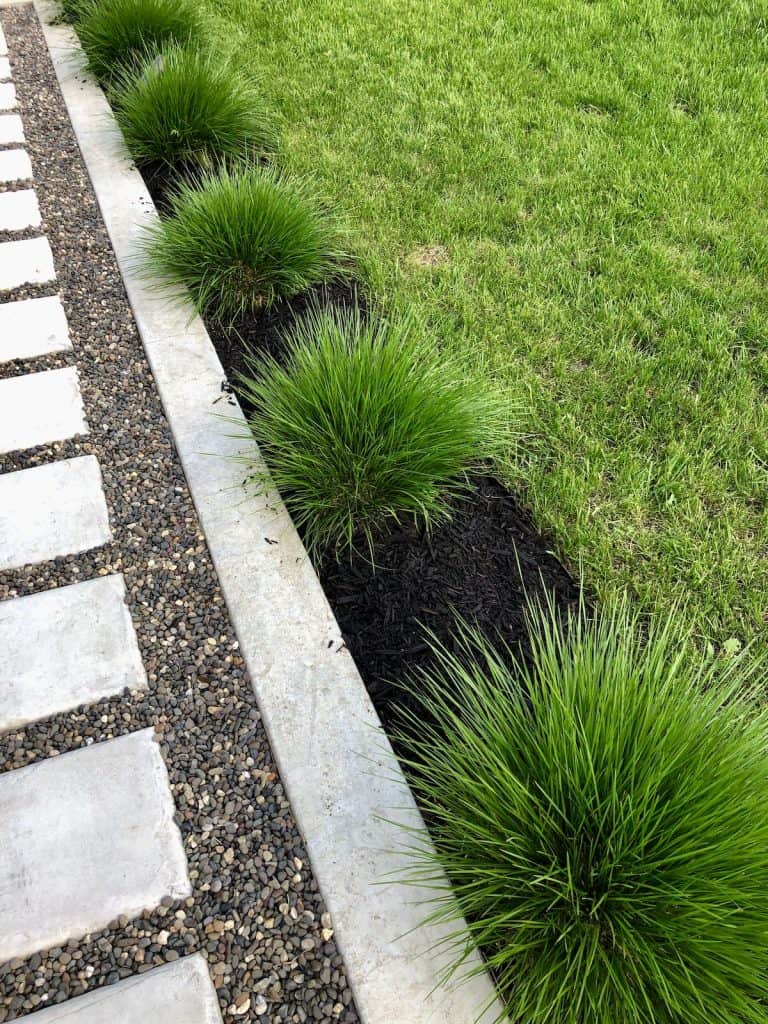
4. Install a perimeter edge for the garden
There are several ways to edge gardens to discourage mulch erosion. The outside perimeter of the bed can be designed and installed in such a way that the mulch tends to stay in place as best as reasonably possible.
a) Perimeter plants
To reduce the mulch from washing away, you can add perimeter plants. These perimeter plants include hostas, sweet woodruff, creeping thyme, and other short-border plants. These plants are suitable for keeping the mulch put because they create a physical barrier for the mulch during the growing season.
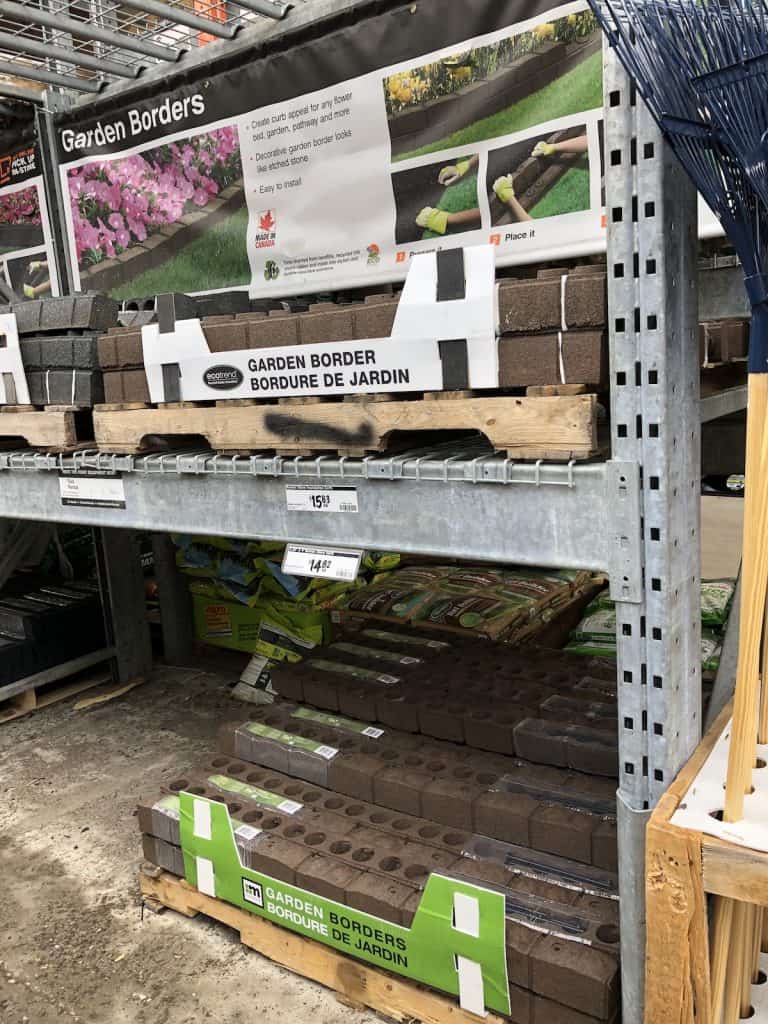
b) Edging material (wood, metal, stone, concrete, plastic)
For a more permanent physical edge, consider installing a hard edging material. There are many different garden edging materials available including cedar lumber, poly synthetic edging, stone edgers, concrete, aluminum, and staggered wood. These edging materials stick up a bit above the mulch and create a barrier to keep it in place.
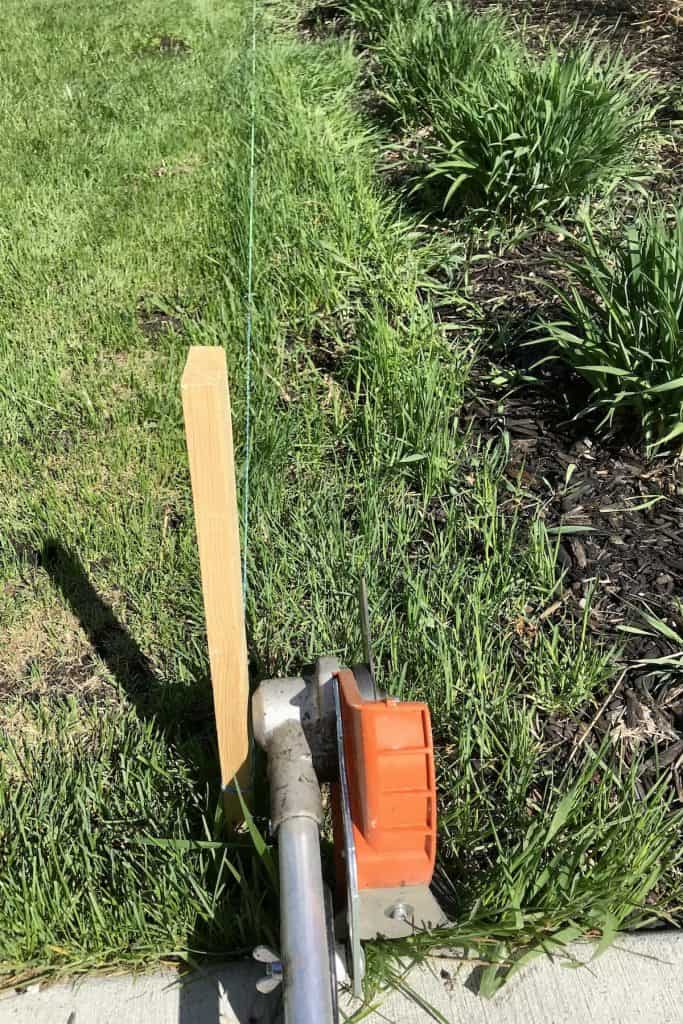
c) Trenching
Making trenches on the edge of your garden will help collect washed-away mulches. While this is more of a strategy to keep mulch from going onto the lawn than from keeping it from moving at all, it can be cost-efficient and effective when done right. Use a plain shovel, manual edging tool, or power edger to create a small divot trench around the perimeter of the garden. This trench will require regular maintenance but is one of the lowest-cost edging techniques available.
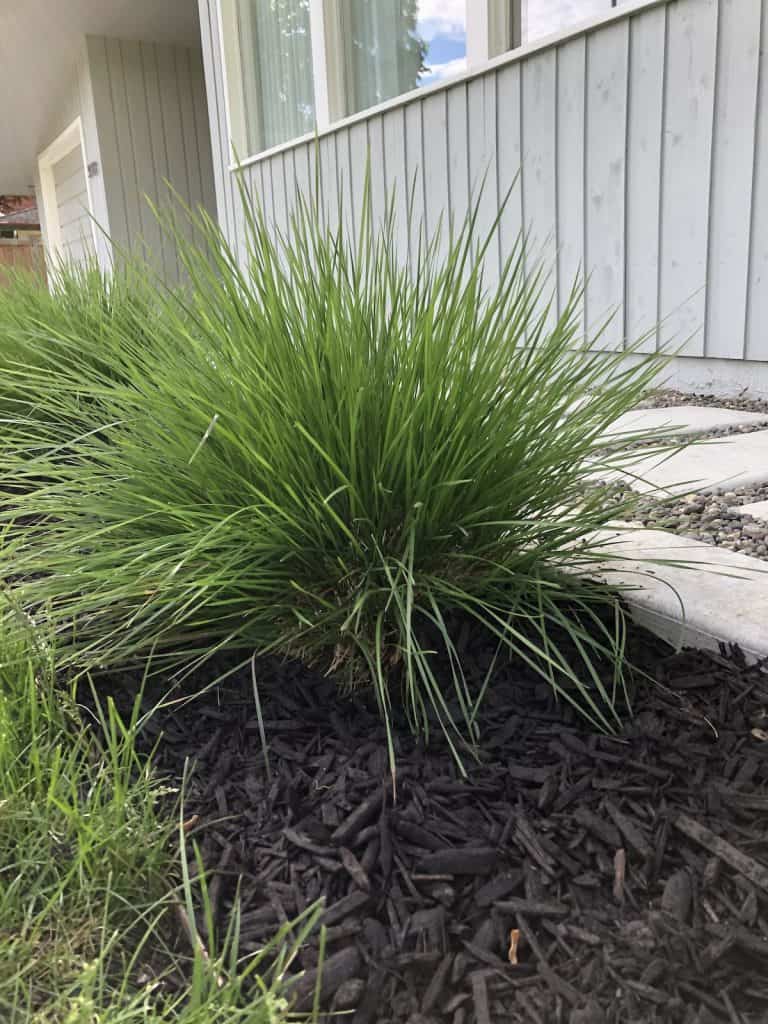
5. Apply the mulch in layers
Applying mulch in layers can sometimes help to keep it in place. If many inches of mulch is simply dumped loosely on a garden bed, mulch can tend to slide away from its intended spot. Rather than dumping big piles of mulch all at once, consider applying mulch more slowly in deliberate layers.
One of the most common mulching routines for experienced gardeners is to apply a 1″ layer of homemade compost to all garden beds each spring and fall. This layer is thin enough to become quickly incorporated into the existing soil structure through natural processes of snow melt, foot traffic, soil life, and other external factors.
Even applying mulch all in one go can sometimes benefit from applying in thin layers. Simply walking over thin layers of mulch during the application process can gently compress excess air out of the mulch and encourage it to stay in place.
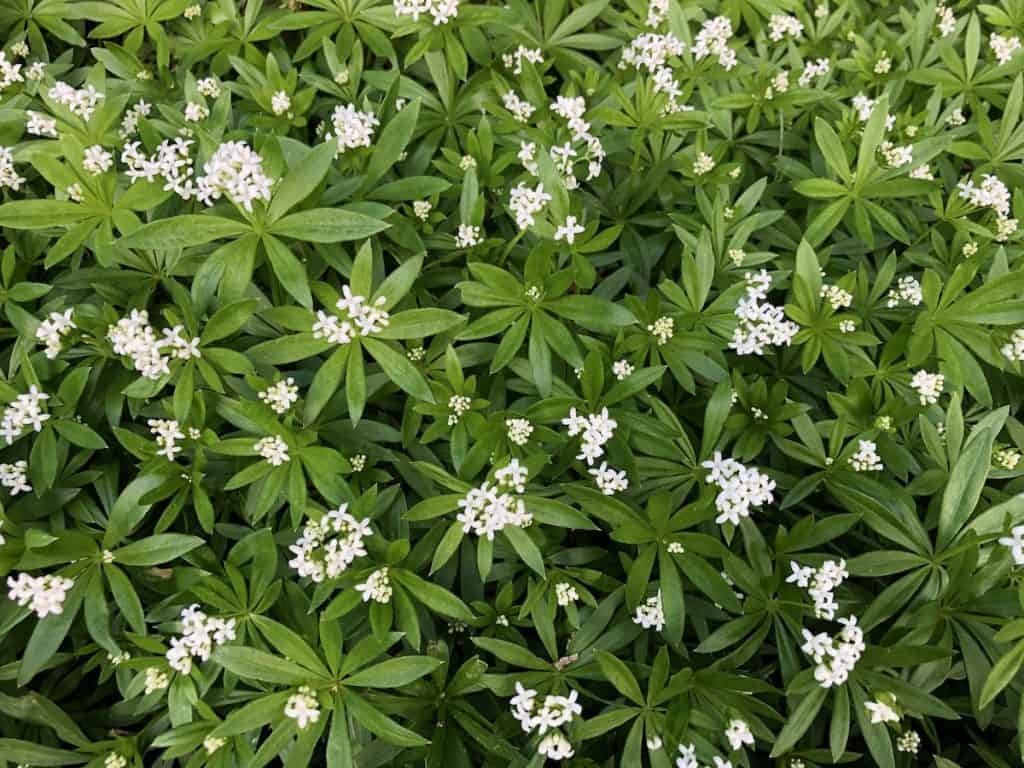
6. Plant a low-growing groundcover plant
A good low-growing groundcover plant can help to “anchor” the mulch material in place with its roots. Plants help the landscape absorb wind and water, which helps the mulch on the ground stay in place. Over years, the groundcover plants will slowly form a “living mulch” over top of the placed mulch. When done right, a living mulch can create an elegant, classic look to a garden, making it look like it’s been there for much longer than it has been!
Here are some great groundcover plants:
